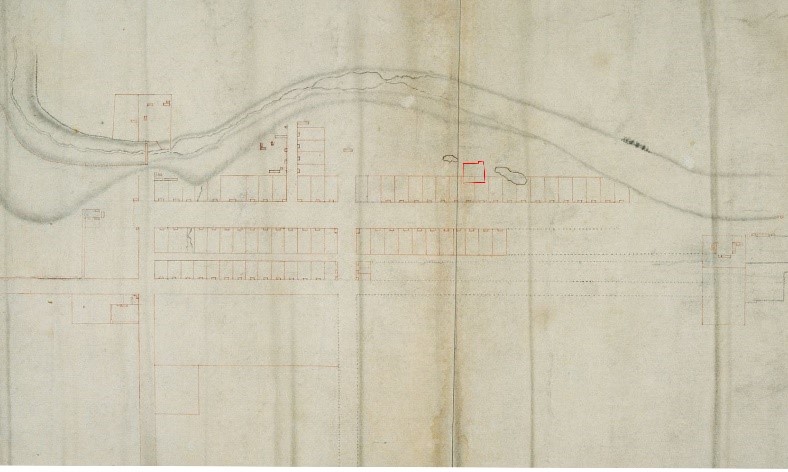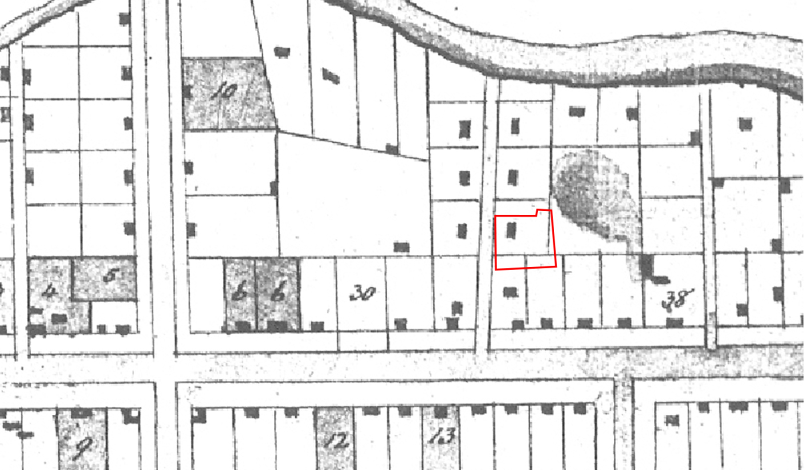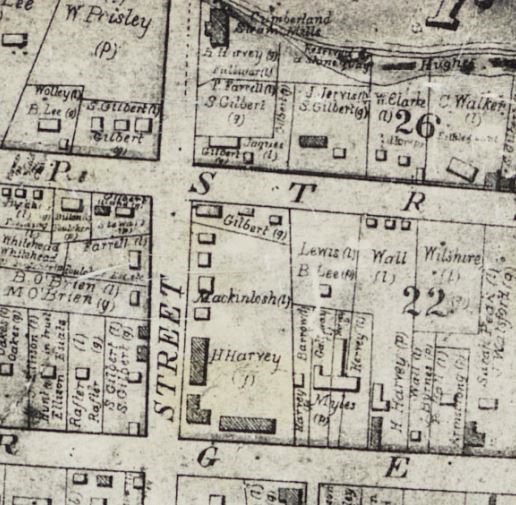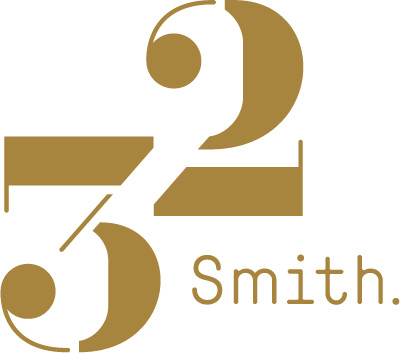Site History
In early maps of Parramatta, the site remained unsubdivided and undeveloped land. There appears to be no structures present on the site until c.1804. From then, however, the site was occupied by various structures, possibly originally influenced by its proximity to the river.


1792 Plan of the Town of Parramatta with the subject site identified by the red outline. Source: Public Record Office, Kew (copied at PRO 1991: reference CO700) London, mark up by AMAC. | 1804 Plan of the Township of Parramatta. Subject site, indicated by red outline, with one structure included on the site. Source: Edward Higginbotham and Paul-Alan Johnson, “The Future of Parramatta’s Past: AN Archaeological Zoning Plan 1788-1844. Volume 1: Text” (1989, reprinted 2010): “Appendix 1: The maps and their presentation”, mark up by AMAC.
|
No other resources have been located to provide any further information on what type of structure it was shown on the 1804 plan, however, an early etching shows a line of simple structures (interpreted as convict huts) typical of the period.
By the 1850s Parramatta evolved into a bustling, industrial business and commercial centre that attracted entrepreneurs and businesses that put considerable pressure on the natural environment.
Local CharactersThe first recorded owners of the site, now known as 32Smith, were Harvey and Gilbert. Prior to this, it was leased by Sarah Barrow, a convict who had been transported to Sydney Cove in c. 1807 on felony charges. Sarah Barrow, born Sarah Blake c 1777, was originally from England. After completing her sentence, she married Benjamin Barrow in 1810 and was referred to as a baker in The Sydney Gazette and New South Wales Advertiser in that year. In 1822, Sarah became a widow and was noted as a substantial agricultural land holder in the Parramatta area. As most major crops were raised outside of the main town area, the subject site was probably not her principal residence. Henry Harvey was born in the Isle of Wight and sent to Australia for theft in 1819 on the convict transport Malabar. After serving his sentence he became a government servant, miller and shopkeeper, building a substantial steam operated mill located at the bottom of Smith Street. By the end of his life, he was considered a prominent person of Parramatta. He died on 27 January 1874. Samuel Gilbert had been charged with forgery and sentenced to transportation to Australia for 14 years. He arrived in 1816 on the ship Mariner, and later became a successful businessman and landowner, known as “The Baker of Parramatta”. He died in June 1875, and he and his wife Mary are buried in St Johns Cemetery at Parramatta.
|

1844 Plan of the Town of Parramatta, by surveyor W Meadows Browrnrigg showing the names of Harvey and Gilbert on the subject site. Source: State Library of New South Wales, FL3690457.
The Salvation Army
The Army was founded in 1865 in London by one-time Methodist circuit-preacher William Booth and his wife Catherine as the East London Christian Mission. In 1878, Booth reorganised the mission, becoming its first General and introducing the military structure, which is retained to the present time as a matter of tradition.
Edward Saunders and John Gore led the first Salvation Army meeting in Australia in Adelaide’s Botanic Park in 1880. The Salvation Army commenced work in New South Wales and Victoria in 1882, followed in 1883 in Tasmania, Queensland in 1885 and Western Australian in 1891.
The “Cumberland Mercury” (1 September 1883) reported that the Salvation Army had purchased a tent and intend visiting Parramatta. The Parramatta brigade was formed the following year as No. 75 Corps.
|




